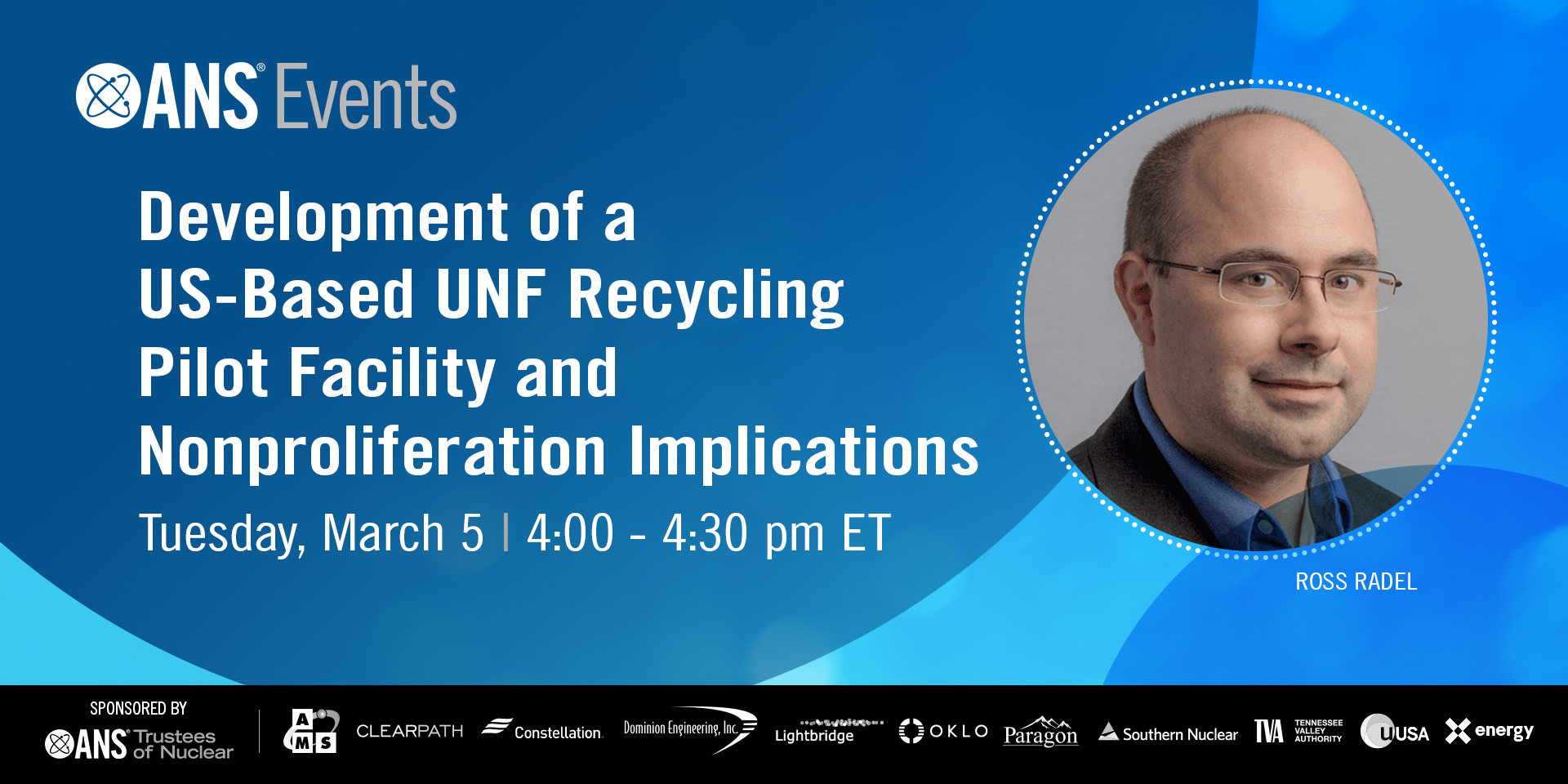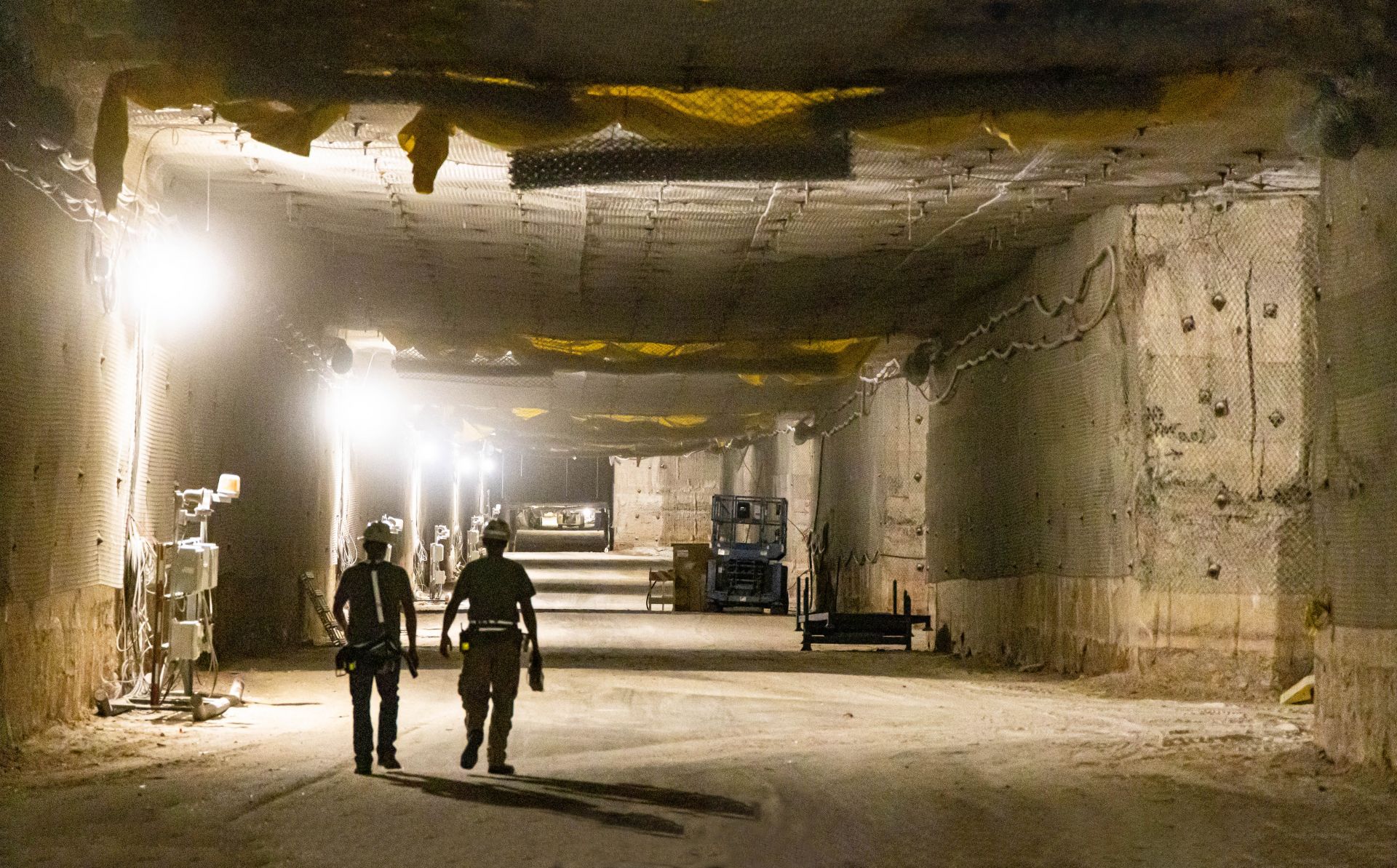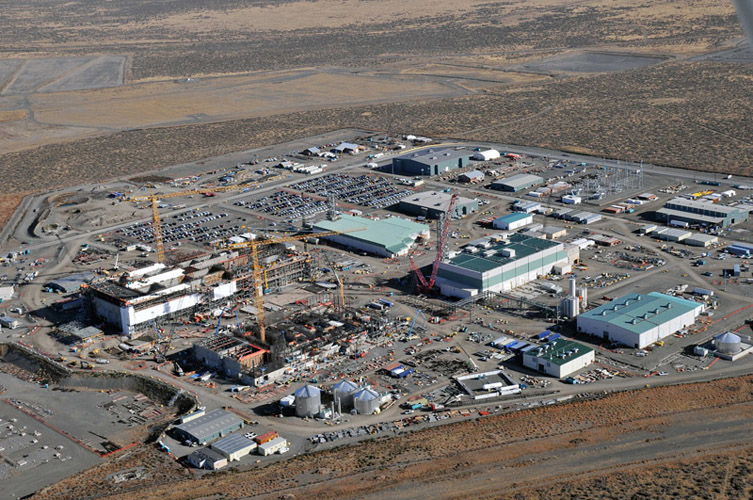From left, Gerald Nieder-Westermann, IAEA waste disposal specialist; Andrea Pigorini, ITA president; Karina Lange, IAEA waste disposal specialist and scientific secretary for the IAEA’s Underground Research Facilities Network, Daniel Garbutt, ITA representative; Helen Roth, ITA executive director; Arnold Dix, ITA past president and chair of the ITA special interest group; and Stefan Joerg Mayer, IAEA team lead. (Photo: ITA)
The International Tunnelling and Underground Space Association (ITA), a nongovernmental organization made up of 81 member states working to advance the safe, beneficial use of subsurface spaces, is working with the International Atomic Energy Agency to support the advancement of geologic disposal facilities for high-level radioactive waste.
Hanford’s HLW Facility under construction in early 2024. (Photo: Bechtel National)
The Government Accountability Office has recommended that the Department of Energy put a hold on construction of its High-Level Waste Facility at the Hanford Site near Richland, Wash. The GAO said design and construction of the facility, part of Hanford’s Waste Treatment and Immobilization Plant, also known as the Vit Plant, should be paused until several actions are taken, including considering other alternatives for managing the site’s high-level radioactive liquid waste.
An artistic representation of a Desulfosporosinus cell with immobilized uranium on the surface. (Image: B. Schröder/HZDR)
Researchers at the Helmholtz-Zentrum Dresden-Rossendorf (HZDR) research laboratory in Germany have investigated a microorganism capable of transforming water-soluble hexavalent uranium [U(VI)] to the less-mobile tetravalent uranium [U(IV)]. The researchers found that the sulfate-reducing bacterium Desulfosporosinus hippei, a relative of naturally occurring microorganisms present in clay rock and bentonite, showed a relatively fast removal of uranium from clay pore water.
The 2F Evaporator at SRS. (Photo: Savannah River Site Photography)
The Department of Energy’s Office of Environmental Management is responsible for roughly 90 million gallons of radioactive liquid waste at Idaho National Laboratory, the Hanford Site in Washington state, and the Savannah River Site in South Carolina. About 900,000 gallons of waste are stored at INL, 56 million gallons at Hanford, and roughly 36 million at SRS. A further 400,000 gallons of waste from various operations are being stored at the Oak Ridge Site in Tennessee.
Workers walk down an underground passageway at the Waste Isolation Pilot Plant transuranic waste repository in New Mexico. (Photo: DOE)
The American Nuclear Society coordinated an effort with eight nongovernmental organizations in asking Congress to update the Environmental Protection Agency’s generic standards for the safe, permanent disposal of spent nuclear fuel (SNF) and high-level radioactive waste.
NEA director general William Magwood (left) and EPRI senior vice president Neil Wilmshurst finalize EPRI support for the joint WISARD project. (Photo: NEA)
The Nuclear Energy Agency has announced a new collaboration with the Electric Power Research Institute on an upcoming project that will focus on waste management strategies for small modular reactors and advanced nuclear energy systems.
Two British Class 88 locomotives transport a nuclear waste flask wagon across Great Britain. (Photos: NTS)
Since its formation in 2005, the United Kingdom’s Nuclear Decommissioning Authority (NDA) has been tasked with ensuring that the U.K.’s nuclear legacy sites are decommissioned and cleaned up safely, securely, cost-effectively, and in ways that protect the people and the environment.
February 17, 2023, 3:03PMRadwaste SolutionsPeter Swift, Michael Apted, Lake Barrett, John Kessler, and Steven Nesbit An electric continuous miner machine cuts out a waste-emplacement panel at the Waste Isolation Pilot Plant salt repository in New Mexico. (Photo: DOE)
Used nuclear fuel and high-level radioactive wastes are by-products of nuclear energy production and other applications of nuclear technology, and the consensus approach to disposing of those wastes safely is to encapsulate them and emplace them in stable geologic formations (geologic repositories) where they will be isolated from people and the environment for very long periods of time. The federal government has established environmental standards for waste isolation that any proposed geologic repository must meet.
In July 2021, the American Nuclear Society established a special committee to consider possibilities for revised generic environmental standards for disposal of spent nuclear fuel and high-level radioactive waste in the United States. The committee developed a number of recommendations, which are contained in a draft report that was to be issued in February for review and comment by stakeholders. The draft report can be found on the ANS website, at ans.org/policy/repositorystandard/.
The committee’s draft recommendations are based on two underlying assumptions. First, that the relevant legislative framework for regulation defined in the Nuclear Waste Policy Act (NWPA) remains unchanged. Specifically, it is assumed that the Environmental Protection Agency will be charged with promulgating environmental standards for disposal and that the Nuclear Regulatory Commission will be charged with reviewing applications for disposal facilities using licensing requirements and criteria consistent with the EPA standards. Second, that existing generic disposal standards will be updated or replaced.
Two workers walk down an underground passageway at the Waste Isolation Pilot Plant transuranic waste repository in New Mexico. (Photo: DOE)
While still lacking a deep geological repository for the permanent disposal of its commercial used nuclear fuel and high-level radioactive waste, the United States does have regulatory standards for geological nuclear waste disposal.
Having been written nearly 40 years ago, however, those standards are outmoded and lack transparency, according to a special committee of the American Nuclear Society, which has released draft recommendations on revising public health and safety standards for future geological repository projects in the United States.
Hanford’s Waste Treatment and Immobilization Plant. (Photo: DOE)
The Department of Energy is asking for feedback on a new report analyzing potential options for preparing high-level radioactive waste for vitrification at the department’s Hanford Site near Richland, Wash. Vitrification is the process of treating radioactive waste by immobilizing it in glass.
The report, Waste Treatment and Immobilization Plant High-Level Waste Treatment: Analysis of Alternatives, was commissioned in response to a 2018 determination by the U.S. Army Corps of Engineers that it was unlikely the DOE would meet its mandated deadlines for treating Hanford’s tank waste.





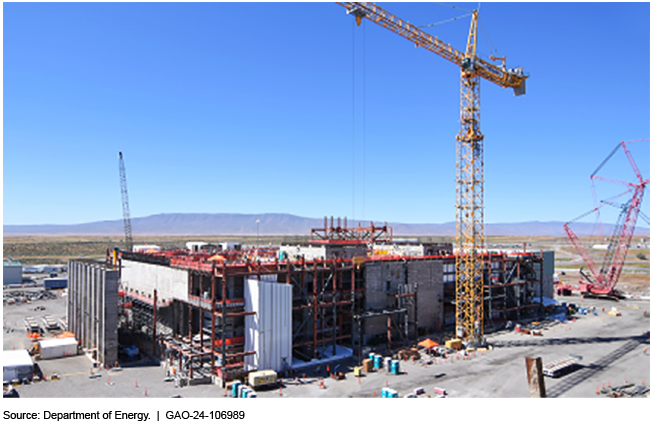
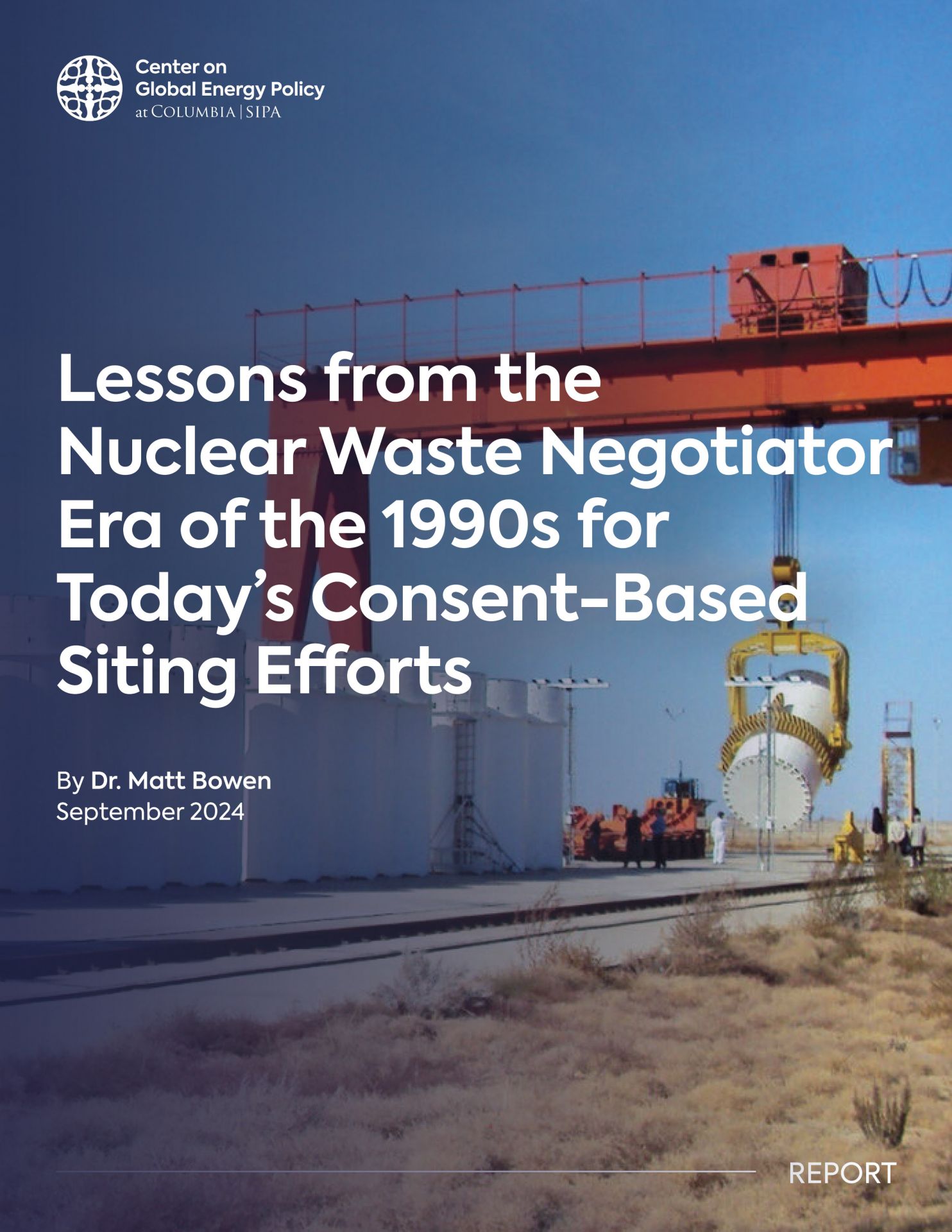 As the Department of Energy embarks on its consent-based process for siting a geologic repository for spent nuclear fuel and high-level radioactive waste, a new report from the Center on Global Energy Policy at Columbia University SIPA highlights relevant lessons from the federal government’s now defunct Office of the Nuclear Waste Negotiator.
As the Department of Energy embarks on its consent-based process for siting a geologic repository for spent nuclear fuel and high-level radioactive waste, a new report from the Center on Global Energy Policy at Columbia University SIPA highlights relevant lessons from the federal government’s now defunct Office of the Nuclear Waste Negotiator.
